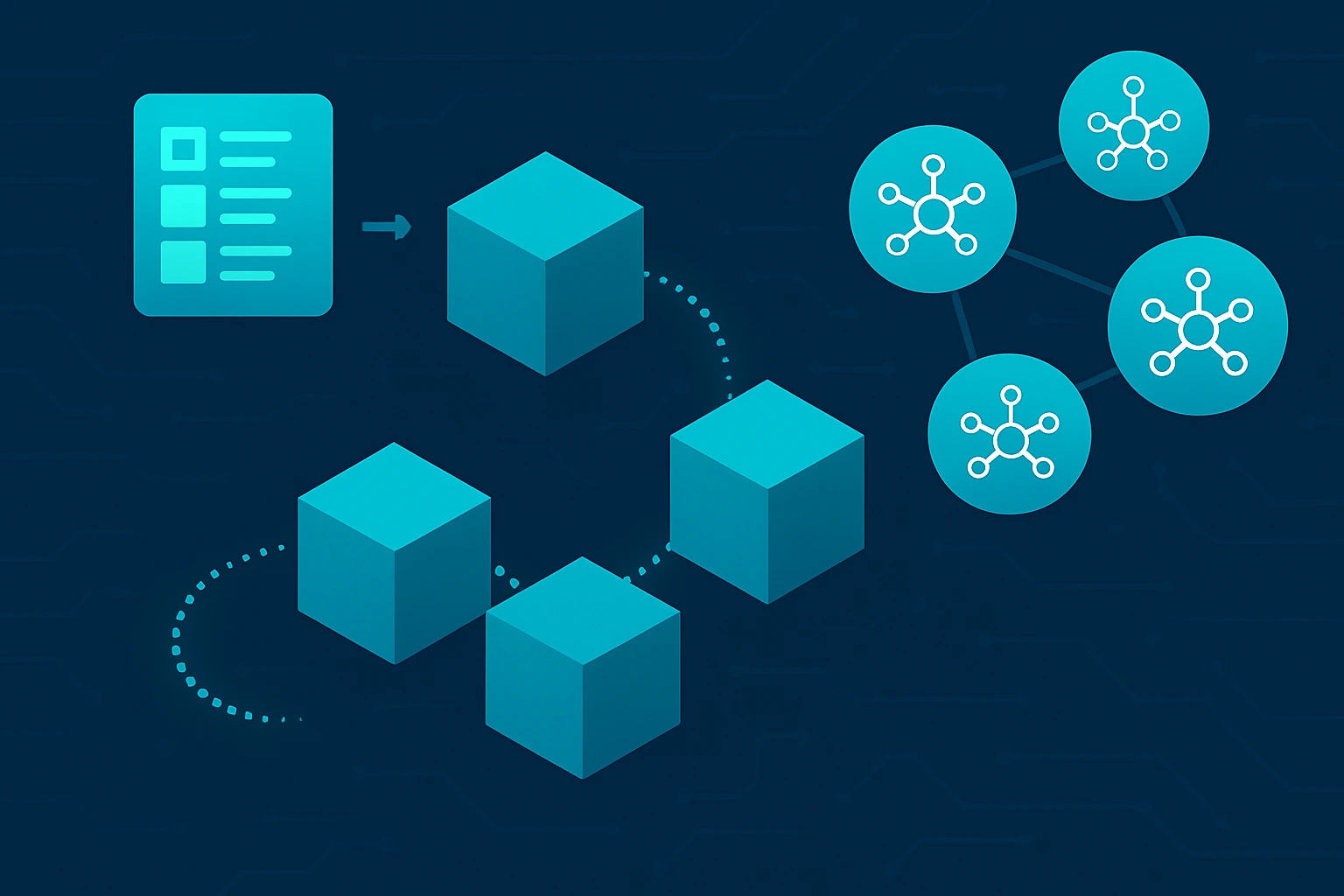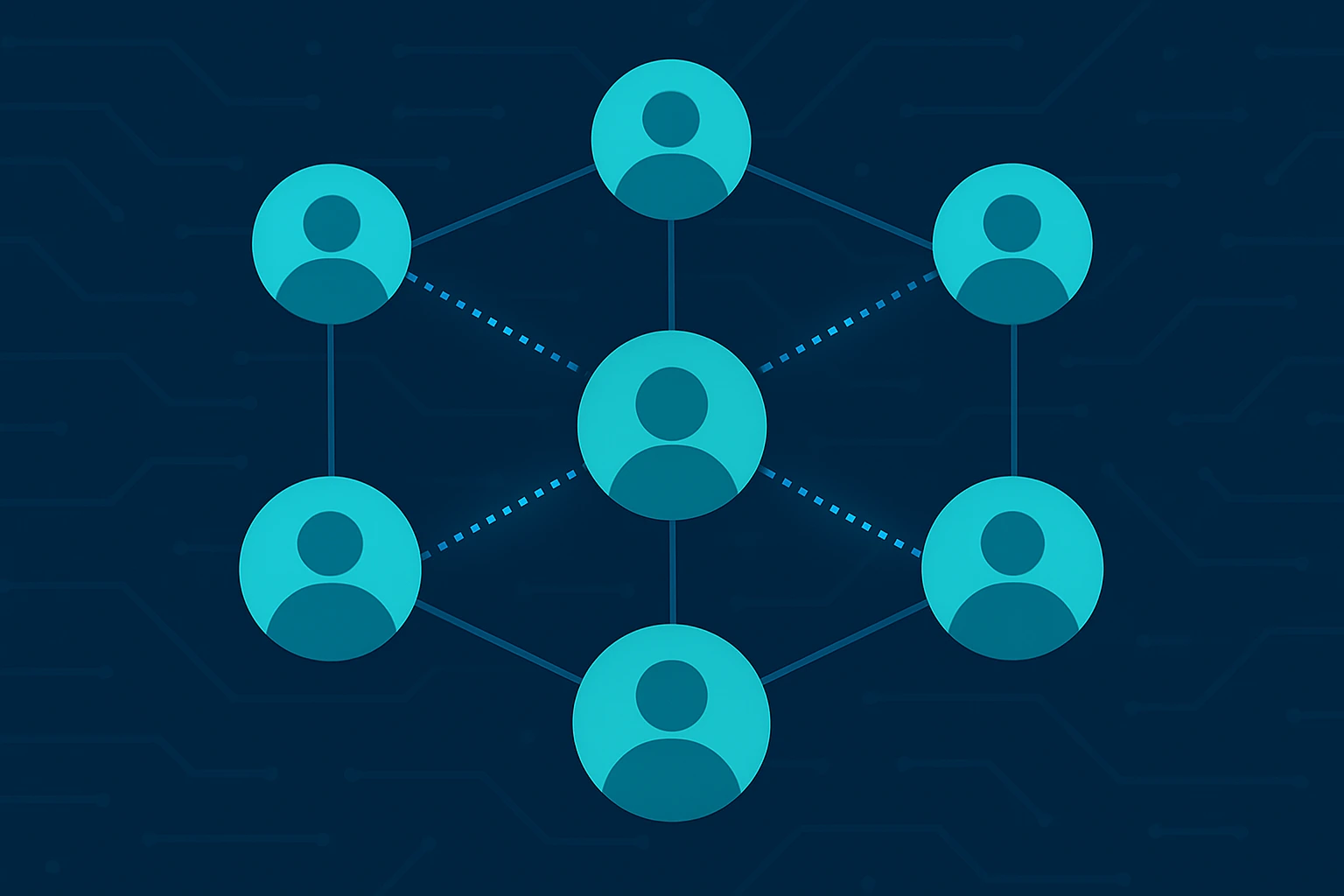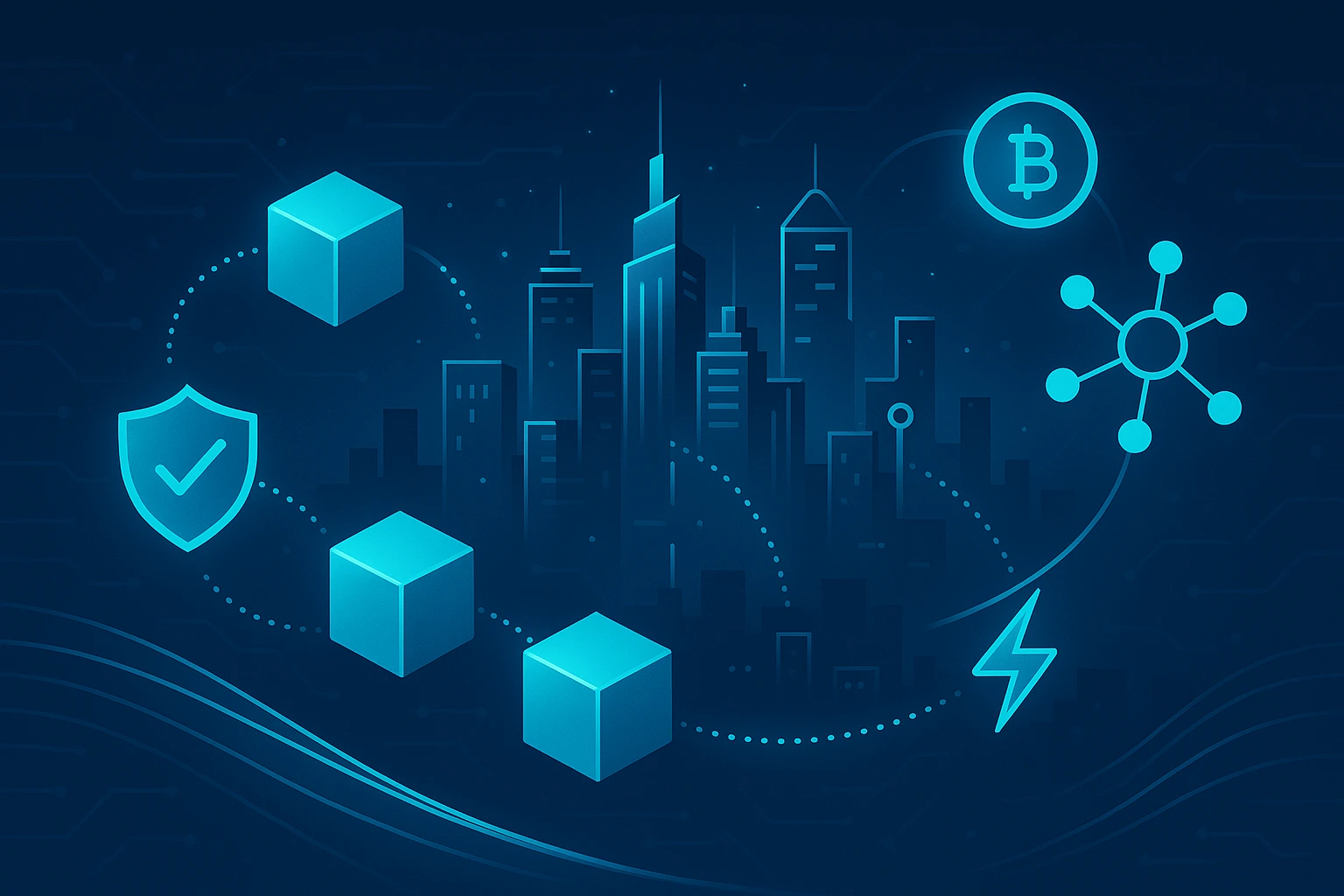Fifteen years ago, an anonymous figure named Satoshi Nakamoto released a nine‑page document that quietly changed the world. That document — the Bitcoin whitepaper — introduced blockchain, a technology designed to answer a deceptively simple question: How can we trust digital information without trusting each other?
Since then, blockchain has evolved from a geeky experiment into the foundation of a multi‑trillion digital economy — powering cryptocurrencies, digital identity, decentralised finance (DeFi), and enterprise data systems. Yet most people still struggle to answer a simple question: What actually is blockchain? This guide breaks it down — without the hype, in plain English.
Quick Verdict
Summary
- Tamper-evident, decentralised ledger enabling trust without intermediaries.
- Powers cryptocurrencies (Bitcoin, Ethereum), smart contracts and real-world systems (supply chains, healthcare).
- Strengths: transparency, security, automation.
- Trade-offs: energy use (PoW), scalability, UX, evolving regulation.
What is Blockchain? (Explained Simply)
At its core, blockchain is a digital ledger — a database shared across thousands of computers worldwide. Whenever someone makes a transaction, the details are recorded, verified by others, and added as a block to this chain of records. Once added, it’s permanent — you can’t erase or secretly alter it. Think of it like a Google Sheet that everyone can see but no one can secretly edit.
Each block carries a unique cryptographic hash (a digital fingerprint) and the hash of the previous block. This creates a tamper‑evident chain — if someone changes the past, all later hashes break and the network rejects the change. That’s why people say data on public blockchains is immutable in practice.
There are public blockchains (Bitcoin, Ethereum) where anyone can verify and participate, and permissioned blockchains for enterprises/governments with restricted access. The core idea is the same: a shared source of truth with security guaranteed by cryptography and consensus.
How Blockchain Works — Simplified, Not Dumbed Down

Steps
Decentralisation & Consensus
- Decentralisation explained: participants jointly store and verify data — no single point of failure or master switch.
- Consensus — Proof of Work (PoW): miners solve puzzles to add blocks; highly secure but energy‑intensive.
- Consensus — Proof of Stake (PoS): validators stake tokens to propose/attest blocks; more efficient and eco‑friendlier.
- Finality: after sufficient confirmations/epochs, the cost and likelihood of reversing a block becomes negligible.
Core Features of Blockchain

Key features
Real-World Applications of Blockchain
Blockchain’s potential stretches far beyond crypto — from payments to public services. Below are high‑impact examples and why they work in practice.
Blockchain Use Cases
- Cryptocurrencies: Peer‑to‑peer money (Bitcoin) and programmable settlement (Ethereum) with 24/7 availability.
- Smart contracts: Automatic agreements; remove bureaucracy and enable composability between apps.
- Supply chain transparency: Track provenance, batches and recalls in seconds — not weeks.
- Healthcare records: Patient‑centric data access with audit trails and granular permissions.
- Digital art & NFTs: Verifiable provenance and programmable royalties for creators.
- Gaming & metaverse: True ownership of in‑game assets; secondary markets without gatekeepers.
- Government & identity: Verifiable credentials, land registries and tamper‑evident public records.
Storytime: How Blockchain Changed a Small Coffee Brand
In 2022, a small Colombian coffee company called Café Oro Verde began tagging every coffee bag with a blockchain‑based QR code. Each code linked to an on‑chain record anchored by the roaster. Customers in London could scan and instantly see:
- Where the beans were grown
- When they were roasted
- The name of the farmer who produced them
- Lot numbers, transit timestamps and the importer’s certificate
That simple transparency increased sales by 22% in six months. Returns due to mislabelling fell, and the brand used the same ledger as a marketing proof at retail. They didn’t become “a crypto company” — they used blockchain’s real strength: trust through transparency.
Pros & Cons of Blockchain

Advantages
Limitations
The Future of Blockchain — Beyond Crypto

Web3: The User‑Owned Internet
Web3 shifts the web from platform‑owned accounts to wallet‑based identity and portable data. Instead of logging in with email + password, users sign with a wallet, keep custody of assets and move between apps without re‑creating profiles. This enables creator monetisation without platform taxes, portable social graphs and user‑controlled data sharing (DIDs / verifiable credentials).
Challenges: UX, key management, account recovery and shared moderation standards — all improving as wallets and L2s mature.
DeFi: Finance Without Banks
DeFi rebuilds markets as transparent smart contracts: AMMs for trading, over‑collateralised lending, on‑chain derivatives and stablecoins. Benefits include 24/7 access, composability and instant settlement across apps. Risks include smart‑contract bugs, oracle failures, liquidation cascades and regulatory uncertainty.
Trend: Layer‑2s cut fees, and regulated front‑ends plus tokenised treasuries are bridging DeFi with institutions.
Tokenisation of Everything
Real‑world assets (RWAs) — treasuries, real estate, invoices, carbon credits — are wrapped as tokens to unlock fractional ownership, global distribution and near‑instant settlement. Issuers gain faster issuance and automated compliance; investors gain 24/7 liquidity and smaller ticket sizes.
The hard part is off‑chain enforcement: qualified custody, KYC/AML, and trustworthy oracles. Expect permissioned rails interoperating with public chains.
AI + Blockchain
AI needs provenance and audit trails. Blockchains timestamp datasets, model versions and inference logs, making outputs traceable and harder to forge. Tokenised data markets and decentralised compute networks coordinate incentives; zero‑knowledge proofs let verifiers check results without exposing raw data.
Limits: throughput, privacy and cost — leading to hybrid designs (off‑chain compute, on‑chain attestation).
Digital Governance & DAOs
DAOs coordinate capital and decisions via on‑chain rules: proposals, votes and transparent treasuries. Effective DAOs blend token voting with safeguards — quorums, timelocks and multi‑sig guardians — and follow progressive decentralisation from a core team to the community.
Practical hurdles: voter apathy, plutocracy, contributor incentives and legal wrappers. The model is maturing for grants, protocols and brand communities.
A Brief History and Evolution
Blockchain was introduced in 2008 by the pseudonymous Satoshi Nakamoto in the Bitcoin whitepaper. Bitcoin became the first real‑world application — decentralised digital money without banks. Over time, developers realised blockchain’s broader potential, leading to programmability (Ethereum), DeFi, NFTs and enterprise data systems.
Key milestones:
- 2008: Bitcoin whitepaper introduces the first blockchain design
- 2009: Bitcoin network launches (first production blockchain)
- 2015: Ethereum brings smart contracts and programmability
- 2017: ICO boom accelerates funding for crypto projects
- 2020–2021: “DeFi summer” and NFTs go mainstream on public chains
- 2023–2025: Layer‑2 adoption grows; enterprise pilots, CBDC experiments and Web3 tooling mature
What started as a decentralised currency now underpins smart contracts, tokenisation and data integrity systems across industries.
Conclusion — Why Blockchain Isn’t Just a Buzzword
Blockchain fundamentals are useful if you:
- Want to understand cryptocurrencies, Web3 and smart contracts
- Explore enterprise applications (supply chain, identity, data integrity)
- Are comfortable learning new digital concepts and tools
May not suit you if you:
- Expect guaranteed returns or zero risk
- Prefer fully centralised, traditional systems only
- Avoid any technical learning curve
Blockchain is more than a technology; it’s a philosophy of digital trust. It redefines how we record value, verify truth and distribute power. In a world of misinformation, blockchain offers something new: a shared source of truth. If you are building a product, start by choosing public vs permissioned networks, define your data model and sources (oracles/attestations). If you are an investor, understand custody risk, regulation and real use cases. The story is only beginning.
FAQs About Blockchain
Frequently Asked Questions
Get answers to the most common questions about crypto exchanges